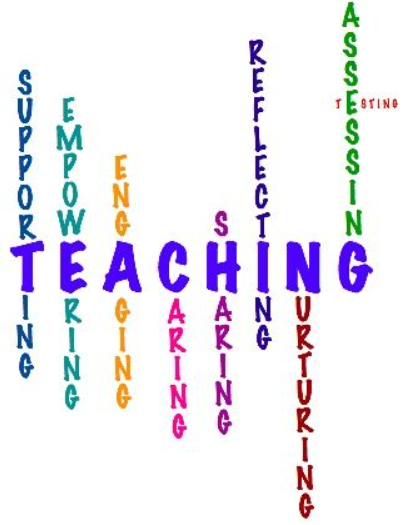

While there can be designated positions/roles such as student and teacher in the process of learning, I like to think that learning can occur every and anywhere, transcending beyond the walls of a traditional classroom. Whether these spaces are formal, informal, or online, what we bring to these spaces is crucial in relation to building community. A question I ask other educators and myself is “How do I sustain space for myself?” After that, I ponder, “How do I sustain space for others?” Sometimes, the best way to learn is by listening to other individuals’ lived experiences of trauma and triumphs. What we do with the information is up to the wielder. Before we can build community with others, we have to look inward and build community within ourselves. The best place where learning can occur is within a space where the individual is comfortable with making mistakes, allowing themselves the opportunity to grow foundationally (both extrinsically and intrinsically). Sometimes, there are certain scenarios that may occupy that space at a certain time, making a specific individual or a group of individuals uncomfortable, it is then up to the facilitator (whomever that may be) to address this particular issue. Learning can also be viewed as trial and error. If everyone can allow each other the space to make mistakes and grow, each individual can think creatively and critically, bridging their own gaps of knowledge, as well as their peers.
Homepage
Personal Introduction
Organization & Internship Role
ECO Capstone Objectives
One of my goals as an educator is to foster different types of opportunities for learning and growth by building relationships with my students. These relationships are different depending on the interaction and the individual. Most importantly, these relationships are authentic and genuine, cultivating wholeness. With online instruction, Zoom has presented many challenges compared to a traditional classroom space/environment. With these challenges, there are a multitude of opportunities for facilitators like myself to explore. One question that dominated how we were going to teach biology was “How do we build relationships with our students?” While there was no one correct answer, we decided to play a little trial and error since we saw all of the odd periods on Mondays and Thursdays and all of the even periods on Tuesdays and Fridays. For example, we would allocate five minutes to talking about anything before beginning class and checking in with students, asking how their day/weekend is. I had started an ‘argument’ when I asked if water was wet. We once talked about our favorite flavors of candy and I jokingly told them that I would give them a 0 on their upcoming unit test if they say their favorite artificial flavor is banana. By building community before class, the culture and tone is foundationally set, inviting others to join and contribute however much they feel comfortable with sharing. With this type of relationship, the students have felt more comfortable asking questions and being wrong, engaging with the material critically. Ever since this, we have seen a rise in their test scores and the completion of multiple assignments on time.